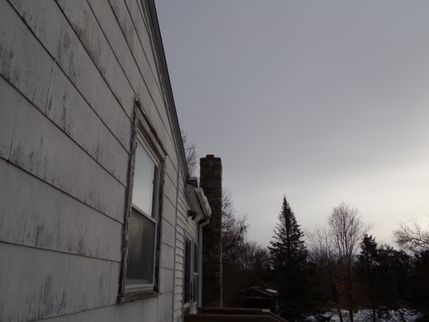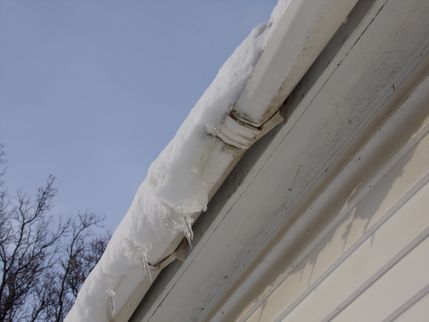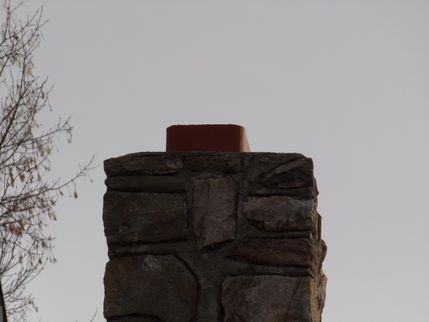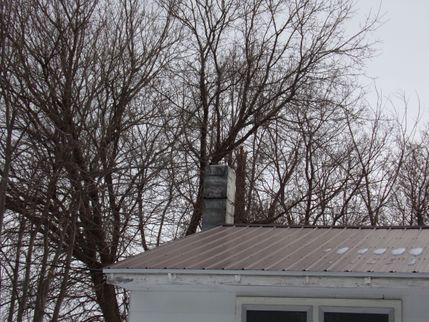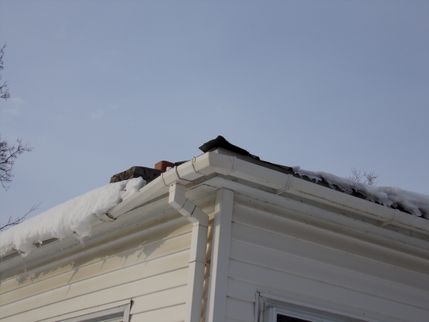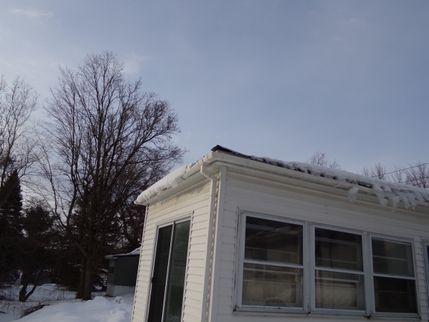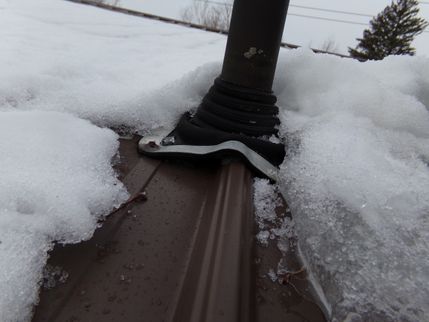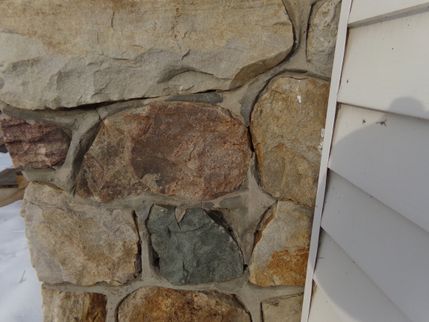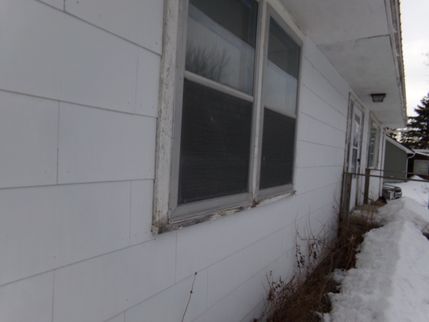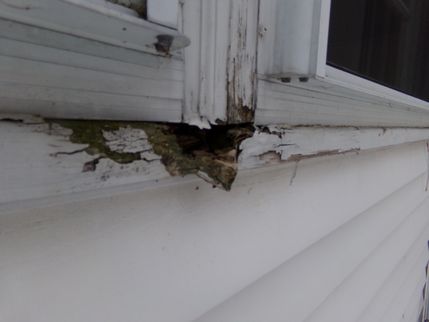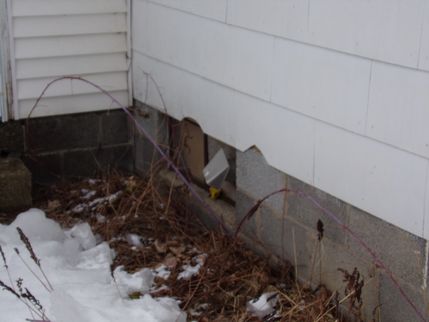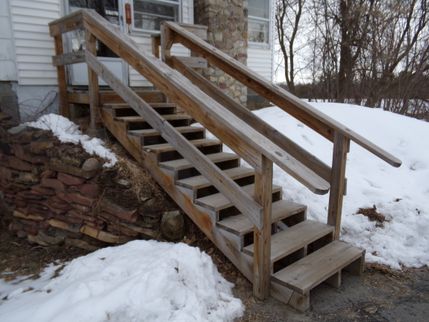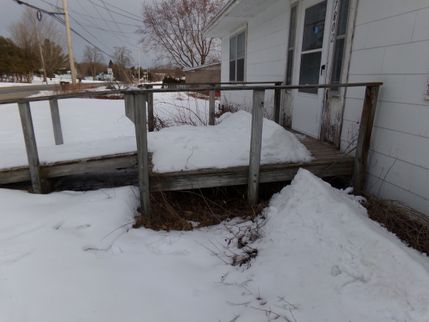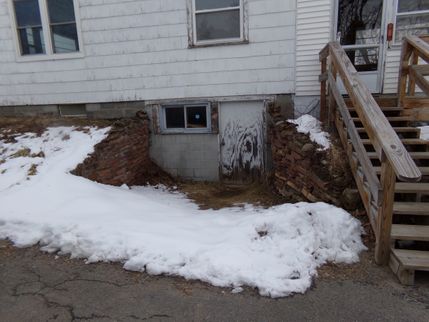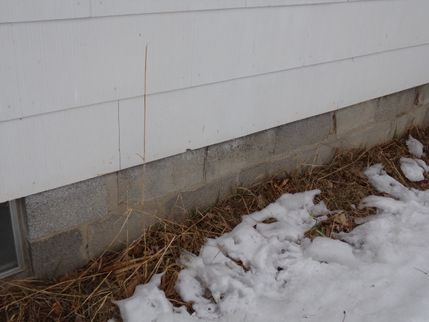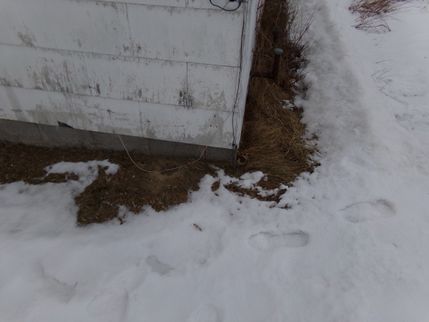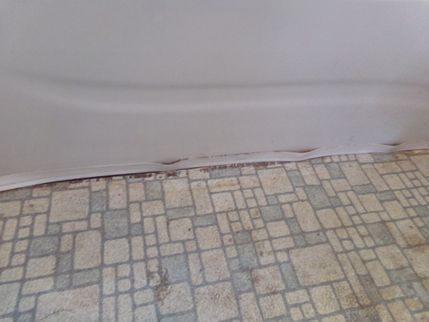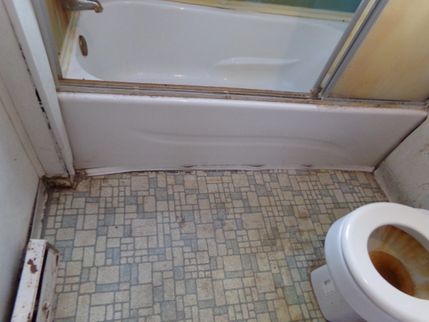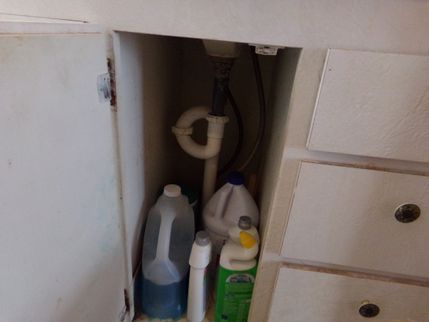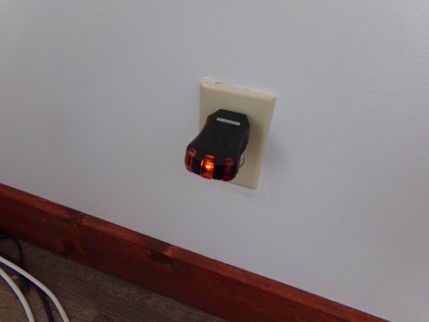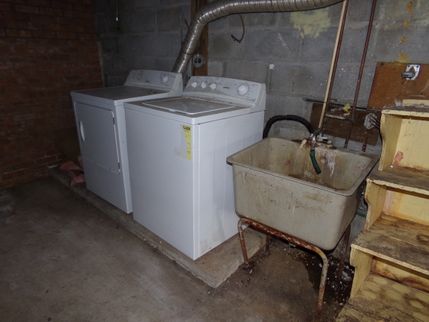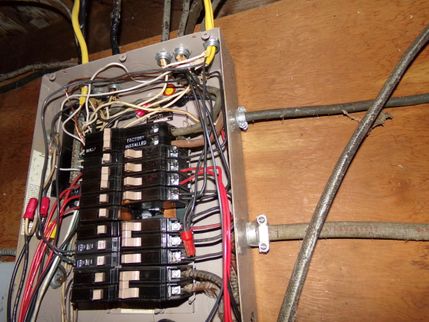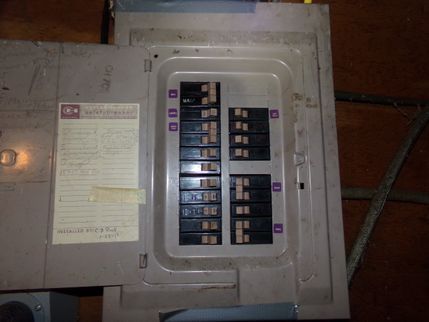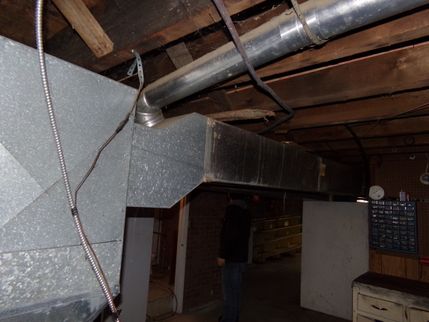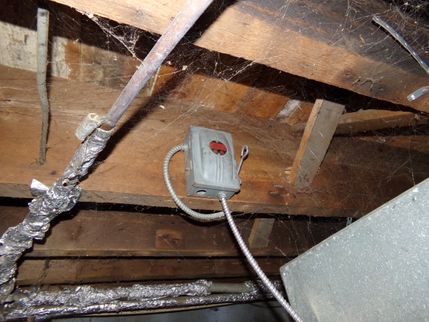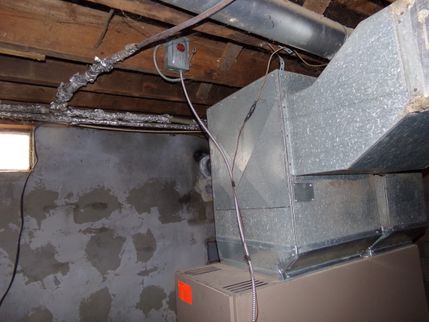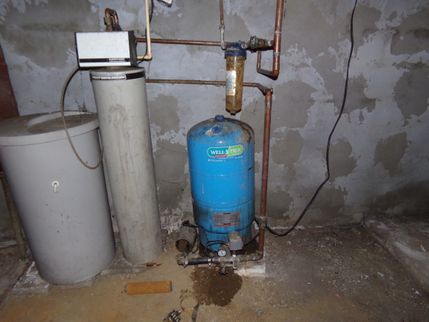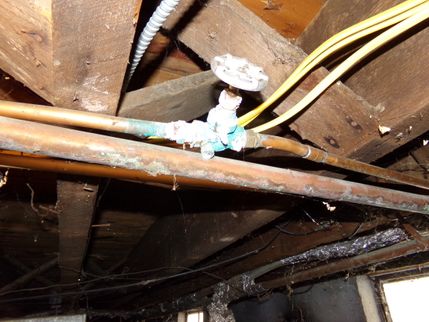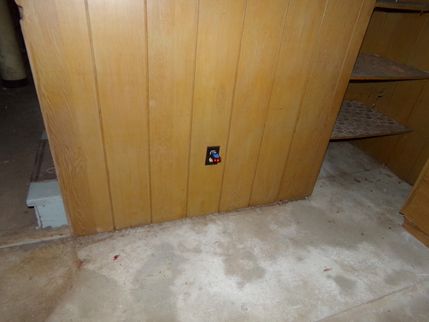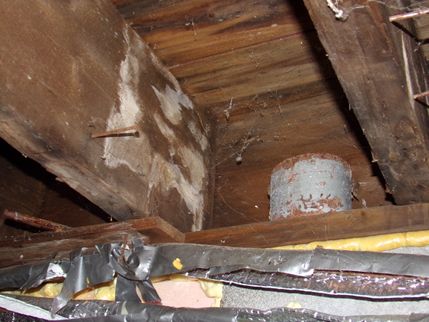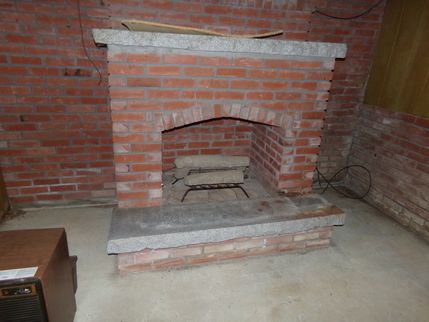The Scope and Purpose of a Home Inspection
Purchasing property involves risk
The purpose of a home inspection is to help reduce the risk associated with the purchase of a structure by providing a professional opinion about the overall condition of the structure. A home inspection is a limited visual inspection and it cannot eliminate this risk. Some homes present more risks than others. The goal of this report is to help educate you about the condition of the structure and systems contained within at the time of the inspection. This is more difficult to convey in a report and one of many reasons why it is recommended that you attend the inspection, or are present at the end of the inspection so that the findings can be conveyed in person and discussed.
A home inspection is not an insurance policy
This report does not substitute for or serve as a warranty or guarantee of any kind. Home warranties can be purchased separately from insuring firms that provide this service.
A home inspection is visual and not destructive
The descriptions and observations in this report are based on a visual inspection of the structure. We inspect the aspects of the structure that can be viewed without dismantling, damaging or disfiguring the structure and without moving furniture and interior furnishings. Areas that are concealed, hidden or inaccessible to view are not covered by this inspection. Some systems cannot be tested during this inspection as testing risks damaging the building. These procedures involve non-invasive investigation and non-destructive testing which will limit the scope of the inspection.
This is not an inspection for code compliance
As a home inspection service, Granite Peaks Home Inspections does not look at building code or code concerns. The goal of the inspection is to look at the safety, operation, and condition of the home and it's features. For concerns regarding code specifics, please contact your local municipality.
The scope of this inspection
This inspection will include the following systems: roof and ventilation, exterior walls, exterior grounds, attic, interior (kitchen, bathrooms, general), electrical, plumbing, heating, and foundation (basement or crawlspace). Other areas inspected may include: attached garages, detached garages, fireplaces, and air conditioning. Tests may also be done for radon and water quality. The evaluation will be based on limited observations that are primarily visual and non-invasive. This inspection and report are not intended to be technically exhaustive.
Your expectations
The overall goal of a home inspection is to help ensure that your expectations are appropriate with the house you are proposing to buy. The goal of Granite Peaks Home Inspections is to assist with discovery by showing and documenting observations during the home inspection. This should not be mistaken for a technically exhaustive inspection designed to uncover every defect with a building.
How to Read This Report
Getting the Information to You
This report is designed to deliver important and technical information in a way that is easy for anyone to access and understand. If you are in a hurry, you can take a quick look at our "Summary Page” and quickly get critical information for important decision making. However, we strongly recommend that you take the time to read the full Report, which includes digital photographs, captions, and descriptions containing additional information.
This report can also be printed on paper or to a PDF document.
Chapters and Sections
This report is divided into chapters that parcel the home into logical inspection components. Each chapter is broken into sections that relate to a specific system or component of the home. You can navigate between chapters with the click of a button on the left side margin.
Most sections will contain some descriptive information done in black font. Observation narrative, done in colored boxes, will be included if a system or component is found to be significantly deficient in some way or if we wish to provide helpful additional information about the system or the scope of our inspection. If a system or component of the home was deemed to be in satisfactory or serviceable condition, there may be no narrative observation comments in that section.
Observation Labels
All narrative observations are colored, numbered and labeled to help you find, refer to, and understand the severity of the observation. Observation colors and labels used in this report are:
- Safety:Items noted as defects that are identified as something that may cause bodily injury, shock hazards, fire hazards, etc.
- Major Concern:Repair items that may cost significant money to correct now or in the near future, or items that require immediate attention to prevent additional damage or eliminate safety hazards.
- Evaluate:Items that may require a specialist to evaluate the existence or severity of defect noted.
- Repair:Repair and maintenance items noted during inspection. Please note that some repair items can be expensive to correct such as re-finishing hardwood floors, but are considered simply repair items due to their cosmetic nature.
- Monitor:Items that should be watched to see if correction may be needed in the future.
- Note:Refers to aside information and/or any comments elaborating on descriptions of systems in the home or limitations to the home inspection.
Summary Page
The Summary Page is designed as a bulleted overview of all the observations noted during inspection. This helpful overview is not a substitution for reading the entire inspection report. The entire report must be read to get a complete understanding of this inspection report as the Summary Page does not include photographs or photo captions.
Summary
Safeties
- RV-1 Roof and Ventilation:
No spark arrestors were observed on the chimneys at the time of the inspection. Spark arrestors are used to prevent sparks from escaping and landing on nearby homes or vegetation, which could lead to fires. Recommend contacting a qualified contractor to repair as necessary.
- EW-1 Exterior Walls:
The service wire insulation was deteriorated at the time of the inspection. The conductor material of the wire was exposed to the weather and the possibility of being touched by someone. This may allow for water to run through the wire and into the panel, but it also poses a shock hazard to occupants of the home. Recommend contacting a qualified electrician and/or the electrical service supplier to repair as necessary.
- EG-1 Exterior Grounds:
No balusters observed on railings of staircases and ramp at the time of the inspection. This may present a safety hazard, especially to small children, who may be able to climb through the railing. Recommend contacting a qualified contractor to repair as necessary.
- B1-1 Bathroom:
The bathroom outlet was not observed to be GFCI (Ground Fault Circuit Interrupter) protected. This may present a shock or fire hazard in the event that water were to infiltrate the outlet. Recommend contacting a qualified electrician to repair as necessary.
- K-1 Kitchen:
No anti-tip bracket was installed on the stove at the time of the inspection. This may present a safety hazard, especially to small children. Recommend contacting a qualified contractor to repair as necessary.
- GI1-1 General Interior:
No smoke detectors or carbon monoxide detectors were noted in the home at the time of the inspection. This may present a safety hazard in the event of a fire or other system failure. Recommend contacting a qualified contractor to repair as necessary.
- F-1 Fireplace:
No hearth extension was noted on the fireplace at the time of the inspection. This may present a safety hazard should sparks or embers fall from the fireplace onto flammable materials below. Recommend contacting a qualified contractor to repair as necessary.
- ES-1 Electrical System:
A double tapped breaker was observed in the electrical panel at the time of the inspection. This may present a fire hazard as the breaker is only designed for one circuit and connection. Adding another connection and circuit may overload the breaker and cause sparks or fire. Recommend contacting a qualified electrician to repair as necessary.
- ES-2 Electrical System:
The panel cover had no screws in it at the time of the inspection. The cover was held on with duct tape. This may present a safety issue as it allows access to the panel to someone that should not be in it. Recommend contacting a qualified electrician to repair as necessary.
- DWH-1 Domestic Water Heater:
No TPRV (Temperature/Pressure Relief Valve) extension was noted at the time of the inspection. This may present a burn/scald hazard in the event of the system failure. Recommend contacting a qualified contractor to repair as necessary.
- B-1 Basement:
Observed outlets in the basement that were not GFCI (Ground Fault Circuit Interrupter) protected, and some that indicated the hot and neutral wires were reversed. Outlets in the basement are recommended to be GFCI protected as the area is more prone to moisture. Moisture intrusion into outlets may be a shock and/or fire hazard. Recommend contacting a qualified electrician to repair as necessary.
Major Concerns
- B-2 Basement:
The foundation wall at the bottom of the stairs was observed to be bowed inward at the time of the inspection. A horizontal crack was observed along the entire length of the visible wall with deflection noted. The crack also appears to pass through an area that looks to have been repaired previously. This may be an indication of hydrostatic pressure against the foundation. Recommend contacting a qualified contractor to evaluate and repair as necessary.
Evaluates
- RV-2 Roof and Ventilation:
Observed that the chimney appeared to be separated from the building structure. This may allow for water and snow to infiltrate behind the chimney and into the structure of the home. Recommend contacting a qualified contractor to evaluate and repair as necessary.
- EG-2 Exterior Grounds:
The retaining walls at the basement door appeared to be leaning inward at the time of the inspection. Erosion from behind the walls was seen on both sides. Recommend contacting a qualified contractor to evaluate and repair as necessary.
- A-2 Attic:
Observed rust on nails and moisture stains along the roof decking and framing at the time of the inspection. Stained areas tested dry. Rust and stains may be caused by high moisture content in the attic. Recommend contacting a qualified contractor to further evaluate attic venting and repair as necessary.
- A-3 Attic:
Low levels of insulation were observed in the attic at the time of the inspection. Insulation is typically recommended to be at least as tall as the ceiling joists in an attic space. Recommend contacting a qualified contractor to evaluate the insulation levels in the attic and repair as necessary.
- B1-2 Bathroom:
Observed low water pressure at the bathroom sink at the time of the inspection. Recommend contacting a qualified contractor to evaluate and repair as necessary.
- K-2 Kitchen:
The window over the sink was difficult to open. Recommend contacting a qualified contractor to evaluate and repair as necessary. No image available.
- GI1-2 General Interior:
A mix of 2- and 3-prong outlets were observed in the home at the time of the inspection. 2-prong outlets are outdated. The 3-prong outlets tested were shown to be ungrounded. This may pose a hazard to devices plugged into these outlets. Recommend contacting a qualified electrician to evaluate and repair as necessary.
- GI1-3 General Interior:
Many of the wood windows in the home did not open or were difficult to open. Recommend contacting a qualified contractor to evaluate and repair as necessary.
- GI1-4 General Interior:
Observed that some of the doors were difficult to close at the time of the inspection. Recommend contacting a qualified contractor to evaluate and repair as necessary. No image available.
- GI1-5 General Interior:
Observed a crack in the floor of the three-season room. The crack had a noticeable difference in height. Recommend having a qualified contractor evaluate and repair the floor as necessary.
- ES-3 Electrical System:
Observed separate fuse boxes for the water heater and the dryer, as well as a generator box that used fuses as well. Fuses are not currently used in modern construction. Recommend contacting a qualified electrician to evaluate and repair as necessary.
Repairs
- RV-3 Roof and Ventilation:
Minimal gutters were observed on the home at the time of the inspection. Gutters will help keep water from collecting against the foundation of the home. Recommend contacting a qualified contractor to repair as necessary.
- RV-4 Roof and Ventilation:
Damaged gutters were observed on areas of the home at the time of the inspection. Damaged or hanging gutters may not allow water to correctly flow away from the home, instead allowing it to collect along the foundation. Recommend contacting a qualified contractor to repair as necessary.
- RV-5 Roof and Ventilation:
Observed gutter downspouts with short or no gutter extensions. This may allow for water to pool next to the foundation of the home. Recommend contacting a qualified contractor to repair as necessary.
- RV-6 Roof and Ventilation:
Observed cracks/deterioration of the chimney structure at the time of the inspection. This may allow for water intrusion into the structure, which may lead to accelerated deterioration, especially due to expansion during the freeze/thaw cycle experienced in this climate. Recommend contacting a qualified contractor to repair as necessary.
- RV-7 Roof and Ventilation:
Observed exposed fascia board along the roof structure at the time of the inspection. Fascia boards exposed to sunlight and weather may deteriorate at an accelerated rate and may allow moisture penetration into the structure of the home. Recommend contacting a qualified contractor to repair as necessary.
- RV-8 Roof and Ventilation:
No rain caps were observed on the chimneys at the time of the inspection. This may allow water into the structure. Recommend contacting a qualified contractor to repair as necessary.
- RV-9 Roof and Ventilation:
Observed a corner of the roofing material was lifted at the time of the inspection. This may allow water intrusion into the roof structure. Recommend contacting a qualified contractor to repair as necessary.
- RV-10 Roof and Ventilation:
Observed a gap under the boots around the plumbing vents. This may allow water to infiltrate the roof structure. Recommend contacting a qualified contractor to repair as necessary.
- EW-2 Exterior Walls:
Observed deterioration of window sills and trim on many of the windows around the home. Continued deterioration may allow for water intrusion into the structure of the home. Recommend contacting a qualified contractor to repair as necessary.
- EW-3 Exterior Walls:
Deterioration was observed at the base of the front door to the home at the time of the inspection. Deteriorated areas may allow for continued water infiltration to the structure of the home. Recommend contacting a qualified contractor to repair as necessary.
- EW-4 Exterior Walls:
Areas of the siding were observed that contained cracks/broken sections. This may allow for water or insect intrusion into the wall structure. Recommend contacting a qualified contractor to repair as necessary.
- EG-3 Exterior Grounds:
Spalling was observed on the foundation block under the rear door to the 3-season room. This may allow for water infiltration into the foundation. Recommend contacting a qualified contractor to repair as necessary.
- EG-4 Exterior Grounds:
Observed basement window with grading higher than bottom level of the window. Soil retains moisture, and moisture in contact with the basement windows may allow for accelerated deterioration of components. Recommend contacting a qualified contractor to repair as necessary.
- EG-5 Exterior Grounds:
The basement door and window appeared to have deterioration along the base and the framing at the time of the inspection. Deterioration may allow for water infiltration into the basement. Recommend contacting a qualified contractor to repair as necessary.
- A-1 Attic:
Observed that the kitchen vent terminates to the attic. This may allow for increased humidity levels in the attic, which may lead to mold if improperly vented. Recommend contacting a qualified contractor to repair as necessary.
- B1-3 Bathroom:
Wood window trim noted in shower at the time of the inspection. Wood trim may absorb moisture in this location, which may lead to accelerated deterioration. Recommend contacting a qualified contractor to repair as necessary.
- B1-4 Bathroom:
Gaps observed in the caulking along the base of the shower at the time of the inspection. This may allow for water intrusion into the sub floor. Recommend contacting a qualified contractor to repair as necessary.
- B1-5 Bathroom:
The sink drain was noted to be an S-trap. S-traps are no longer recommended under current construction standards as they may be slow to drain and they may also siphon themselves out. This may allow for sewer gases to flow back into the home. Recommend contacting a qualified contractor to repair as necessary.
- GI1-6 General Interior:
Moisture stains observed around windows in unfinished three-season room. Moisture may allow for accelerated deterioration of building structure. Recommend contacting a qualified contractor to repair as necessary.
- F-2 Fireplace:
Observed that the damper in the fireplace did not function correctly at the time of the inspection. This may have negative effects on the performance of the fireplace, as well as potentially allow for water, insect, or vermin intrusion into the home. Recommend contacting a qualified contractor to repair as necessary.
- PS-1 Plumbing System:
Observed what appeared to be a leak at the well tank. Leaks can create standing water in the basement, increasing the chances of mold. Recommend contacting a qualified contractor to repair as necessary.
- PS-2 Plumbing System:
Leaks and oxidation observed at valves in multiple locations. Leaks may cause standing water in the basement, increasing the chance of mold. Oxidation may be an indication of component deterioration. Recommend contacting a qualified contractor to repair as necessary.
Monitors
- RV-11 Roof and Ventilation:
Cracks noted in the stone chimney at the time of the inspection. Cracks appear to be in mortar. Cracks may allow water infiltration into the structure, which may cause crack expansion during the freeze/thaw cycle experienced in this climate. Recommend monitoring cracks for any growth or expansion and contact a qualified contractor to evaluate and repair if necessary.
- EG-6 Exterior Grounds:
Cracks were observed in the foundation in multiple areas around the home. One area indicated potentially a previous repair. Cracks may allow for moisture intrusion, which can allow for cracks to grow and expand, especially during the freeze/thaw cycle experienced in this climate. Recommend monitoring the cracks for any growth or expansion and contact a qualified contractor to evaluate and repair if necessary.
- B-3 Basement:
Areas of the subfloor above were noted to have moisture staining on them. Stains were dry at the time of inspection. Recommend monitoring areas for any further staining or wet spots that may indicate active leaks.
Notes
- EW-5 Exterior Walls:
Observed that the siding on the house appears to be an asbestos-containing material. Asbestos siding does not pose a health hazard as long as it is not disturbed. If siding is to be replaced it is recommended to contact the local health department and/or Department of Environmental Conservation for more information on material testing, and proper removal and disposal practices.
- B2-1 Bathroom:
Bathroom not tested. Informed that plumbing to this bathroom was not connected. Pictures represent the condition of the bathroom at the time of inspection.
- K-3 Kitchen:
No hot water was received at the faucet at the time of the inspection. Water was turned off prior to inspection and breaker for water heater was also off.
- K-4 Kitchen:
Pictures represent the condition of the kitchen at the time of the inspection.
- GI1-7 General Interior:
Three-season room was unfinished at the time of the inspection. Ceiling joists, rafters, roof decking, and floor foundation were visible. Pictures represent the condition of the unfinished space.
- F-3 Fireplace:
Recommend contacting a qualified contractor to perform a level 2 fireplace inspection.
- L-1 Laundry:
Pictures represent the condition of the laundry area at the time of the inspection.
- ES-4 Electrical System:
Pictures represent the condition of the electrical panel at the time of the inspection.
- DWH-2 Domestic Water Heater:
The breaker and water valve to the water heater were off at the time of the inspection. No hot water was received at the faucets. Pictures represent the condition of the water heater at the time of the inspection.
- HS-1 Heating System:
Pictures represent the condition of the heating system at the time of the inspection.
- PS-3 Plumbing System:
Pictures represent the condition of the plumbing system at the time of the inspection.
- B-4 Basement:
A dehumidifier was noted in the basement at the time of the inspection. This may be an indication of high moisture levels in this area.
- B-5 Basement:
The fireplace in the basement did not appear operational at the time of the inspection. There is no chimney for this fireplace and it appears to have been set up for gas. Recommend contacting a qualified contractor to evaluate the fireplace before it is put into use.
- B-6 Basement:
Mold-like substance was noted on ceiling tiles throughout the basement. The seller has indicated that ceiling tiles will be removed prior to the sale of the house.
- SC-1 Safety Concerns:
Recommend that new smoke detectors and carbon monoxide detectors are installed in the home upon moving in.
- SC-2 Safety Concerns:
Recommend having new locks installed after moving in to prevent anyone that may have had a key from the previous owner from having access to the home.
Full Report
General Information
Area Overview: Rural Road
Start Time: 9:00 am
End Time: 11:30 am
Present at Inspection: Buyer
Occupancy: Unoccupied
Age of House: Between 50 and 100 years
Type of House: 1 family house
Weather Condition: Cloudy
Temperature: Cold
Ground Condition: Snow Covered
Foundation: Basement
Excluded From Inspection: Well, Water Softener
House Number: On house
Roof and Ventilation
Roof Inspection Method: From Eaves, From Ground
Roof Type: Gable
Roof Covering: Metal
Roof Approximate Age: Newer
Roof Penetrations: Vent Pipe, Chimney
Gutter Material: Vinyl, Minimal
Gutter Extensions: None Noted
Chimney Appears to be Built: Exterior
Spark Arrestor/Rain Cap: Not Noted
Chimney made of: Block, Stone
Chimney Flue: Not Noted
Chimney Crown: Noted, Not Visible
Gable Overhang: 12-24 inches
Eave Overhang: Flush
Roof Ventilation: Gable Vents
No spark arrestors were observed on the chimneys at the time of the inspection. Spark arrestors are used to prevent sparks from escaping and landing on nearby homes or vegetation, which could lead to fires. Recommend contacting a qualified contractor to repair as necessary.
Observed that the chimney appeared to be separated from the building structure. This may allow for water and snow to infiltrate behind the chimney and into the structure of the home. Recommend contacting a qualified contractor to evaluate and repair as necessary.
Minimal gutters were observed on the home at the time of the inspection. Gutters will help keep water from collecting against the foundation of the home. Recommend contacting a qualified contractor to repair as necessary.
Damaged gutters were observed on areas of the home at the time of the inspection. Damaged or hanging gutters may not allow water to correctly flow away from the home, instead allowing it to collect along the foundation. Recommend contacting a qualified contractor to repair as necessary.
Observed gutter downspouts with short or no gutter extensions. This may allow for water to pool next to the foundation of the home. Recommend contacting a qualified contractor to repair as necessary.
Observed cracks/deterioration of the chimney structure at the time of the inspection. This may allow for water intrusion into the structure, which may lead to accelerated deterioration, especially due to expansion during the freeze/thaw cycle experienced in this climate. Recommend contacting a qualified contractor to repair as necessary.
Observed exposed fascia board along the roof structure at the time of the inspection. Fascia boards exposed to sunlight and weather may deteriorate at an accelerated rate and may allow moisture penetration into the structure of the home. Recommend contacting a qualified contractor to repair as necessary.
No rain caps were observed on the chimneys at the time of the inspection. This may allow water into the structure. Recommend contacting a qualified contractor to repair as necessary.
Observed a corner of the roofing material was lifted at the time of the inspection. This may allow water intrusion into the roof structure. Recommend contacting a qualified contractor to repair as necessary.
Observed a gap under the boots around the plumbing vents. This may allow water to infiltrate the roof structure. Recommend contacting a qualified contractor to repair as necessary.
Cracks noted in the stone chimney at the time of the inspection. Cracks appear to be in mortar. Cracks may allow water infiltration into the structure, which may cause crack expansion during the freeze/thaw cycle experienced in this climate. Recommend monitoring cracks for any growth or expansion and contact a qualified contractor to evaluate and repair if necessary.
Exterior Walls
Wall Structure: Wood Frame
Wall Covering Material: Asbestos-like Material
Condition of Wall: Acceptable
Trim Material: Aluminum
Condition of Trim: Acceptable
Door Material: Wood
Windows: Screens, Vinyl Windows
Main Entry Surface: Wood
Main Entry Steps Down: Ramp
Main Entry Roof: None
Electrical Service Supply: Overhead
Overhead Wires Threatened: No
Service Size: 60/100 Amp
Drip Loop Present: Yes
Meter Amperage: 200 Amp
Voltage: 120/240 Volts
Meter Caulking Condition: Poor
The service wire insulation was deteriorated at the time of the inspection. The conductor material of the wire was exposed to the weather and the possibility of being touched by someone. This may allow for water to run through the wire and into the panel, but it also poses a shock hazard to occupants of the home. Recommend contacting a qualified electrician and/or the electrical service supplier to repair as necessary.
Observed deterioration of window sills and trim on many of the windows around the home. Continued deterioration may allow for water intrusion into the structure of the home. Recommend contacting a qualified contractor to repair as necessary.
Deterioration was observed at the base of the front door to the home at the time of the inspection. Deteriorated areas may allow for continued water infiltration to the structure of the home. Recommend contacting a qualified contractor to repair as necessary.
Areas of the siding were observed that contained cracks/broken sections. This may allow for water or insect intrusion into the wall structure. Recommend contacting a qualified contractor to repair as necessary.
Observed that the siding on the house appears to be an asbestos-containing material. Asbestos siding does not pose a health hazard as long as it is not disturbed. If siding is to be replaced it is recommended to contact the local health department and/or Department of Environmental Conservation for more information on material testing, and proper removal and disposal practices.
Exterior Grounds
General Information
Exterior of Foundation Walls: Block
Exterior Foundation Exposure: 6 Inches to 1 Foot
Exterior Foundation Condition: Small Cracks, Deteriorated Surfaces
Grading Within 6 Feet of House: About Level
Grading Beyond 6 Feet of House: Slopes Away, About Level
Driveway: Asphalt
Driveway Condition: Small Cracks
Walkway to Front Entry: Snow Covered
Well Head Location: Side Yard
Well Head Cap Type: Non Sanitary
No balusters observed on railings of staircases and ramp at the time of the inspection. This may present a safety hazard, especially to small children, who may be able to climb through the railing. Recommend contacting a qualified contractor to repair as necessary.
The retaining walls at the basement door appeared to be leaning inward at the time of the inspection. Erosion from behind the walls was seen on both sides. Recommend contacting a qualified contractor to evaluate and repair as necessary.
Spalling was observed on the foundation block under the rear door to the 3-season room. This may allow for water infiltration into the foundation. Recommend contacting a qualified contractor to repair as necessary.
Observed basement window with grading higher than bottom level of the window. Soil retains moisture, and moisture in contact with the basement windows may allow for accelerated deterioration of components. Recommend contacting a qualified contractor to repair as necessary.
The basement door and window appeared to have deterioration along the base and the framing at the time of the inspection. Deterioration may allow for water infiltration into the basement. Recommend contacting a qualified contractor to repair as necessary.
Cracks were observed in the foundation in multiple areas around the home. One area indicated potentially a previous repair. Cracks may allow for moisture intrusion, which can allow for cracks to grow and expand, especially during the freeze/thaw cycle experienced in this climate. Recommend monitoring the cracks for any growth or expansion and contact a qualified contractor to evaluate and repair if necessary.
Attic
Attic Access: Hatch
Observation Method: Walked Through End to End
Roof System: Rafters
Rafter/Truss Distance Apart: 18 inches
Moisture Penetration: Rust on Nails, Water Stains on Deck and Structure
Attic Floor Framing: Wood
Attic Floor System: Catwalk
Ventilation: Gable Vent
Insulation Location: Floor
Insulation Material: Blown Cellulose
Observed rust on nails and moisture stains along the roof decking and framing at the time of the inspection. Stained areas tested dry. Rust and stains may be caused by high moisture content in the attic. Recommend contacting a qualified contractor to further evaluate attic venting and repair as necessary.
Low levels of insulation were observed in the attic at the time of the inspection. Insulation is typically recommended to be at least as tall as the ceiling joists in an attic space. Recommend contacting a qualified contractor to evaluate the insulation levels in the attic and repair as necessary.
Bathroom
Bathroom Location: Hallway, First Floor
Bathroom Style: Full
Shower: With Tub
Tub: Built-in
Surround: Plastic
Surround Condition: Poor
Number of Sinks: One
Sink Type: Vanity
Toilet: Flushed
Toilet Condition: Acceptable
Floor Material: Linoleum
Floor Condition: Acceptable
Leaks: None Noted
Caulking: Cracked
Ventilation: Fan, Window
Outlets: One
Bathroom GFCI: No
Functional Flow Test: No Drop In Pressure
Safety Grab Bar: Not Noted
Water Cut-offs: Noted Under Sink
The bathroom outlet was not observed to be GFCI (Ground Fault Circuit Interrupter) protected. This may present a shock or fire hazard in the event that water were to infiltrate the outlet. Recommend contacting a qualified electrician to repair as necessary.
Observed low water pressure at the bathroom sink at the time of the inspection. Recommend contacting a qualified contractor to evaluate and repair as necessary.
Wood window trim noted in shower at the time of the inspection. Wood trim may absorb moisture in this location, which may lead to accelerated deterioration. Recommend contacting a qualified contractor to repair as necessary.
Gaps observed in the caulking along the base of the shower at the time of the inspection. This may allow for water intrusion into the sub floor. Recommend contacting a qualified contractor to repair as necessary.
The sink drain was noted to be an S-trap. S-traps are no longer recommended under current construction standards as they may be slow to drain and they may also siphon themselves out. This may allow for sewer gases to flow back into the home. Recommend contacting a qualified contractor to repair as necessary.
Bathroom
Bathroom Location: Basement
Bathroom Style: Full
Shower: Stall
Tub: None
Surround: Plastic
Surround Condition: Poor
Number of Sinks: One
Sink Type: Wall Hung
Toilet: Not Flushed
Floor Material: Linoleum
Floor Condition: Poor
Ventilation: Window
Kitchen
Cabinets: Wood
Open/Closed: Seemed to Function
Cabinets Secured: Yes
Counter Tops: Plastic Laminate
Counter Tops Secured: Yes
Floor Material: Vinyl
Dishwasher: None
Kitchen Sink: Stainless
Ran Water: No Leaks
Disposal: None
Refrigerator: GE
Refrigerator Age: Mid-Life
Range: GE
Range Type: Electric
Range Age: Older
Operated Range: Yes
Anti-Tip Bracket: No
Oven: Part of Stove
Operated: Yes
Stove Ventilation: Fan to attic
Number of GFCI Outlets: Three or More
GFCI Outlets Worked Properly: Yes
Number of Regular Outlets: Two
Kitchen Windows: Wood, Vinyl
Kitchen Windows Condition: Operated Properly
No anti-tip bracket was installed on the stove at the time of the inspection. This may present a safety hazard, especially to small children. Recommend contacting a qualified contractor to repair as necessary.
The window over the sink was difficult to open. Recommend contacting a qualified contractor to evaluate and repair as necessary. No image available.
No hot water was received at the faucet at the time of the inspection. Water was turned off prior to inspection and breaker for water heater was also off.
General Interior
Ceilings: Drywall
Ceiling Style: Flat
Stains Noted On Ceilings: No
Wall Material: Drywall
Condition of Walls: Acceptable
Floor Coverings: Wood, Vinyl
Floor Condition: Acceptable
Door Material: Wood, Hollow Core
Condition of Doors: Difficult to Close
Window Style: Double Hung
Insulated Glazing Noted In Windows: Most
Stairs: To Basement
Stair Condition: Acceptable
Outlets: Mix of 2- and 3-Prong
Smoke Detectors: Not Noted on Each Floor
Carbon Monoxide Detector: Not Noted On Each Floor
No smoke detectors or carbon monoxide detectors were noted in the home at the time of the inspection. This may present a safety hazard in the event of a fire or other system failure. Recommend contacting a qualified contractor to repair as necessary.
A mix of 2- and 3-prong outlets were observed in the home at the time of the inspection. 2-prong outlets are outdated. The 3-prong outlets tested were shown to be ungrounded. This may pose a hazard to devices plugged into these outlets. Recommend contacting a qualified electrician to evaluate and repair as necessary.
Many of the wood windows in the home did not open or were difficult to open. Recommend contacting a qualified contractor to evaluate and repair as necessary.
Observed that some of the doors were difficult to close at the time of the inspection. Recommend contacting a qualified contractor to evaluate and repair as necessary. No image available.
Observed a crack in the floor of the three-season room. The crack had a noticeable difference in height. Recommend having a qualified contractor evaluate and repair the floor as necessary.
Moisture stains observed around windows in unfinished three-season room. Moisture may allow for accelerated deterioration of building structure. Recommend contacting a qualified contractor to repair as necessary.
Fireplace
Fireplace Style: Fireplace
Fireplace Material: Stone
Location: Entry
Damper: Broken
Flu Liner: Was Not Visible
Depth of Hearth Extension: None
Depth of Fireplace Hearth: 12 Inches
Distance to Nearest Flammable Material: 24 Inches or More
No hearth extension was noted on the fireplace at the time of the inspection. This may present a safety hazard should sparks or embers fall from the fireplace onto flammable materials below. Recommend contacting a qualified contractor to repair as necessary.
Observed that the damper in the fireplace did not function correctly at the time of the inspection. This may have negative effects on the performance of the fireplace, as well as potentially allow for water, insect, or vermin intrusion into the home. Recommend contacting a qualified contractor to repair as necessary.
Recommend contacting a qualified contractor to perform a level 2 fireplace inspection.
Laundry
Location: Basement
Washing Machine: Hotpoint
Washing Machine Age: Mid-Life
Connections Observed: Yes
Washer Overflow Pan: Not Necessary
Operated Washer: No
Dryer: Hotpoint
Dryer Age: Mid-Life
Dryer Power: Electric
Dryer Vent: To Exterior
Dryer Vent Material: Flexible Ribbed Metal
Operated Dryer: No
Outlets is GFCI Protected: No
Electrical System
Location Of Main Panel: Basement
Location of Main Disconnect: Top of Panel
Type of Protection: Circuit Breakers, Fuses
Service Conductor Material: Unknown
Main Disconnect Rating: 100 Amp
Branch Wiring: BX, Romex (NM Sheathed)
Aluminum Branch Wiring : No
Double Tapped Breakers: Yes
Additional Room: Yes
Missing Covers: No
15 Amp Breakers: 12 Gauge Wire
20 Amp Breakers: 12 Gauge Wires
30 Amp Breakers: 10 Gauge Wire
Grounding Observed To: Exterior Grounding Rod
Generator Back Up: Control Box Noted
A double tapped breaker was observed in the electrical panel at the time of the inspection. This may present a fire hazard as the breaker is only designed for one circuit and connection. Adding another connection and circuit may overload the breaker and cause sparks or fire. Recommend contacting a qualified electrician to repair as necessary.
The panel cover had no screws in it at the time of the inspection. The cover was held on with duct tape. This may present a safety issue as it allows access to the panel to someone that should not be in it. Recommend contacting a qualified electrician to repair as necessary.
Observed separate fuse boxes for the water heater and the dryer, as well as a generator box that used fuses as well. Fuses are not currently used in modern construction. Recommend contacting a qualified electrician to evaluate and repair as necessary.
Domestic Water Heater
Manufacturer: Whirlpool
Type: Tank
Energy Source: Electric
Estimated Age: Mid-Life
Capacity: 40 Gallon
Safety Relief Valve: Noted
TPRV Extension: Not Noted
Supply Valve: Noted
Drain Discharge: Floor
Rust, Corrosion, or Damage: Not Noted
Tested Hot Water: Hot Water Not Received at Faucet
Location: Basement
No TPRV (Temperature/Pressure Relief Valve) extension was noted at the time of the inspection. This may present a burn/scald hazard in the event of the system failure. Recommend contacting a qualified contractor to repair as necessary.
Heating System
Brand Name: Johnson
Apparent Age of Unit: Older
Heating System Type: Forced Hot Air
Energy Source: Oil
Combustion Air Supply: Interior
When Turned On: System Fired and Gave Heat
Emergency Shutoff: Noted Above Unit
Flue Pipes: Pitched up to Chimney
Distribution: Ductwork in Most Rooms
System Location: Basement
Oil Tank Location: Basement
Oil Tank Age: Mid-Life
Abandoned Oil Tank: Unknown
Type of Tank: Bottom Tap
Vent Pipe: Steel, Vents Outside
Oil Tank Spill: None Noted
Plumbing System
Water Service Type: Private
Main Entry Pipe: Polyethylene
Location of Main Water Shut-Off: Next to Meter
If Private, Evidence Is: Well Head
Well Type: Drilled
Well Components: Tank, Pressure Gauge, Pump
Location of Well Head: Outside
Interior Supply Pipes: Copper
With Multiple Fixtures Running: Minimum Decrease in Flow
Waste System Pipes: Plastic
Main Waste Line Cleanouts: Noted
Vent Pipe Observed: Side of House
House Trap: Not Noted
Condition of Well Components: Acceptable Condition
Pressure Gauge Range: 30-50 psi
Pump Cycles More Than 1 Minute: No
Observed what appeared to be a leak at the well tank. Leaks can create standing water in the basement, increasing the chances of mold. Recommend contacting a qualified contractor to repair as necessary.
Leaks and oxidation observed at valves in multiple locations. Leaks may cause standing water in the basement, increasing the chance of mold. Oxidation may be an indication of component deterioration. Recommend contacting a qualified contractor to repair as necessary.
Basement
Basement Access: Stairs From Interior, Walkout
Foundation Walls: Exposed to View, Hidden From View By Paneling
Foundation Wall Material: Concrete Block
Ceiling Framing: Exposed to View
Basement Floor: Poured Concrete Slab
General Area Dampness: Efflorescence
Ventilation: Windows, Doors
Pier/Support Material: Bearing Wall
Support Condition: Appears Intact
Floor Structure Above: Wood Joists
Insulation Material: None
Windows: Steel
Chimney In Basement: None Noted
Floor Drainage: Drain
Sump Pump: None Noted
Observed outlets in the basement that were not GFCI (Ground Fault Circuit Interrupter) protected, and some that indicated the hot and neutral wires were reversed. Outlets in the basement are recommended to be GFCI protected as the area is more prone to moisture. Moisture intrusion into outlets may be a shock and/or fire hazard. Recommend contacting a qualified electrician to repair as necessary.
The foundation wall at the bottom of the stairs was observed to be bowed inward at the time of the inspection. A horizontal crack was observed along the entire length of the visible wall with deflection noted. The crack also appears to pass through an area that looks to have been repaired previously. This may be an indication of hydrostatic pressure against the foundation. Recommend contacting a qualified contractor to evaluate and repair as necessary.
Areas of the subfloor above were noted to have moisture staining on them. Stains were dry at the time of inspection. Recommend monitoring areas for any further staining or wet spots that may indicate active leaks.
A dehumidifier was noted in the basement at the time of the inspection. This may be an indication of high moisture levels in this area.
The fireplace in the basement did not appear operational at the time of the inspection. There is no chimney for this fireplace and it appears to have been set up for gas. Recommend contacting a qualified contractor to evaluate the fireplace before it is put into use.
Safety Concerns
Outlets Tested For GFCI: Using Testing Plug
Smoke Detectors Noted: None Noted
Carbon Monoxide Detectors: None Noted
Recommend that new smoke detectors and carbon monoxide detectors are installed in the home upon moving in.
Recommend having new locks installed after moving in to prevent anyone that may have had a key from the previous owner from having access to the home.


